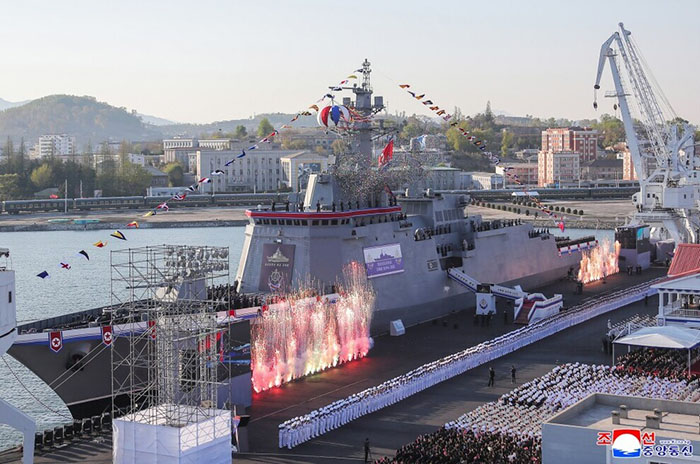The Multipurpose Destroyer: Capabilities and Strategic Implications
The vessel itself loomed large behind the father-daughter pair: sleek, formidable, and draped in the national colors of red, white, and blue. Although North Korea’s state media did not disclose detailed specifications, naval analysts have speculated based on imagery and precedent. Measuring an estimated 140 meters in length, the ship appears to be equipped with multiple vertical launch systems capable of firing cruise missiles, anti-aircraft missiles, and possibly new types of anti-ship ballistic missiles developed domestically.
Nampho’s strategic location on the west coast, facing China across the Yellow Sea, positions this new destroyer as a critical asset for defending vital sea lanes and asserting North Korean presence in contested maritime regions. Moreover, its “multipurpose” designation hints at a flexible platform that could engage in coastal defense, anti-submarine warfare, and long-range strikes, expanding the operational reach of the North Korean Navy, traditionally seen as a coastal defense force rather than a blue-water navy.
The ship’s unveiling aligns with broader trends in North Korea’s recent military activities: a focus on modernization, diversification, and deterrence. Over the past three years, despite punishing international sanctions and domestic economic challenges exacerbated by pandemic-era border closures, Pyongyang has unveiled a series of advanced weapons systems, including hypersonic missiles, new intercontinental ballistic missiles, and now, enhanced naval assets.

